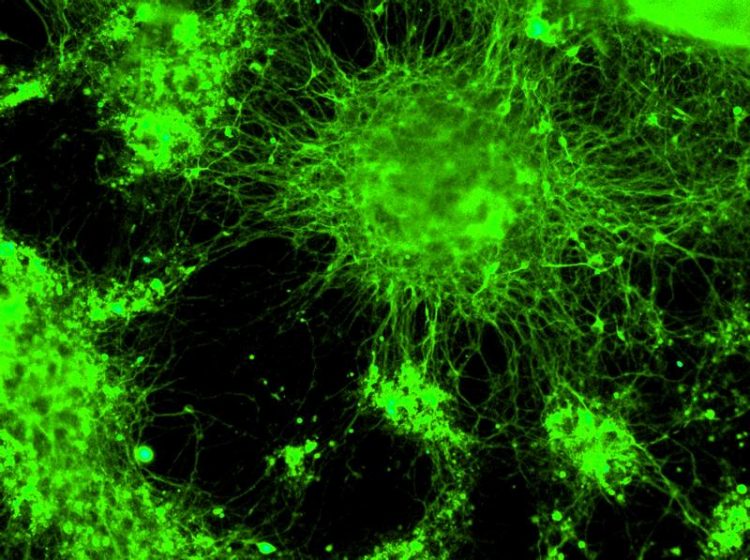Transfecting cells gently – the LZH presents a GNOME prototype at the Labvolution 2017

GNOME laser transfection can continuously achieve high vitality rates of over 80% in primary cells (here: cortical neurons). Photo: LZH
Whether for drug screening, protein production or gene regulation, moving exogenous molecules into biological cells, also known as transfection, is a key technology for basic research and also for clinical and industrial applications.
The main challenge lies in permeating the cell membrane efficiently without having a lasting effect on the cell, or the functionality of the molecule.
Laser transfection with gold nanoparticles
The LZH has developed the gold nanoparticle supported laser transfection process GNOME (gold nanoparticle mediated), which allows high transfection efficiency with a minimal influence on the target cells, high vitality rates, and short process times.
The gold nanoparticles adhere to the cell membrane and accurately focus the laser energy of a pico-second laser. The membrane is permeated and exogenous molecules can flow into the cell.
The prototype shown at the Labvolution is suitable for all common microtiter plate formats, and is thus ideal for high throughput screening. As it is used, among other things, in the development of active agents.
Also, new therapeutics, for example based on CRIPR (Clustered regularly interspaced short palindromic repeats) technology, can be evaluated. Visitors of the exhibition can see the possibilities of the GNOME laser transfection and how it is operated.
The Lower Saxony Pavilion is organized by the Lower Saxony Ministry of Science and Culture as well as the Ministry for Economics, Labor and Transport.
Media Contact
More Information:
http://www.lzh.de/All latest news from the category: Life Sciences and Chemistry
Articles and reports from the Life Sciences and chemistry area deal with applied and basic research into modern biology, chemistry and human medicine.
Valuable information can be found on a range of life sciences fields including bacteriology, biochemistry, bionics, bioinformatics, biophysics, biotechnology, genetics, geobotany, human biology, marine biology, microbiology, molecular biology, cellular biology, zoology, bioinorganic chemistry, microchemistry and environmental chemistry.
Newest articles

Why getting in touch with our ‘gerbil brain’ could help machines listen better
Macquarie University researchers have debunked a 75-year-old theory about how humans determine where sounds are coming from, and it could unlock the secret to creating a next generation of more…

Attosecond core-level spectroscopy reveals real-time molecular dynamics
Chemical reactions are complex mechanisms. Many different dynamical processes are involved, affecting both the electrons and the nucleus of the present atoms. Very often the strongly coupled electron and nuclear…

Free-forming organelles help plants adapt to climate change
Scientists uncover how plants “see” shades of light, temperature. Plants’ ability to sense light and temperature, and their ability to adapt to climate change, hinges on free-forming structures in their…





















